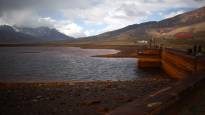Bolivia’s neighboring countries Brazil, Paraguay and Peru have also suffered from unusual late winter and early spring heat waves.
In South America, Bolivia is in danger of running out of water in parts of the country due to a long-lasting drought and a record-warm winter.
The situation also applies in the high-altitude city of El Alto, which is located at an altitude of about 4,000 meters above sea level.
Climate change is affecting the glaciers of the Bolivian Andes, which drain fresh water into the surrounding wetlands, springs and dams. Residents of El Alto only get water at certain times of the day.
Local resident Bertha Apaza says that the extreme heat has been a clear sign of climate change, which has forced city dwellers to regulate water use.
– We have schedules according to which we get water. We don’t have enough water to cook or wash clothes, let alone shower, Apaza said.
Bolivia has experienced extreme temperatures in August and September, which are usually mild months.
The authorities are confident that the water reserves will be sufficient until December, when the rainy season usually begins.
Members of the scientific community warn that the situation could become critical when the El Niño weather phenomenon is expected to arrive in December. This may change the forecast and increase the temperature.
El Niño can cause extreme weather events ranging from wildfires to tornadoes and drought in some areas and just more rain in others.
The heat waves also affected Bolivia’s neighboring countries
Bolivia’s neighboring countries Brazil, Paraguay and Peru have also suffered from unusual late winter and early spring heat waves, with temperatures hitting all-time records in the southern hemisphere.
In Brazil, the drought caused by the heat has, among other things, made it difficult for people to move in the Amazon region. The level of the Amazon River was found to be historically low due to the drought. The drought has also affected fishing, which is a significant livelihood in the Amazon region.
The state of Amazonas even declared an environmental emergency in the region in September due to the long-lasting drought.
Sources: Reuters, AP
